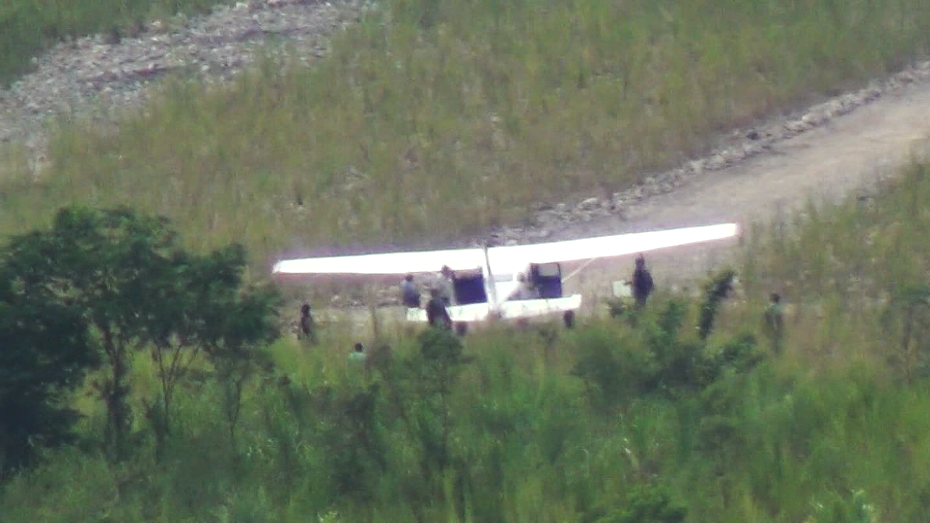A revealing video from Peru shows the speed with which drug traffickers can load up an aircraft with cocaine before take-off, demonstrating how easily criminal groups are taking advantage one of the region’s most important trafficking routes.
The video (see below) published by IDL – Reporters on November 25 shows the Bolivian-licensed plane landing on a narco airstrip in Peru’s principal coca-producing region, known as the VRAEM, and taxiing on the ground while roughly a dozen people load the plane with cocaine shipments. Within just six minutes, the drug plane had already taken off for Bolivia, carrying at least 300 kilos of cocaine valued at no less than $300,000, according to IDL – Reporters.
The video — dated October 27 — also shows a crew member handing over a white box to one of the drug suppliers which, according to security officials, contained the payment for the cocaine shipment.
While it is not certain what became of the aircraft, a drug plane of the same make and model was captured in Peru’s Satipo province on November 22. The aerial interdiction was part of a joint operation between Peru and Bolivia.
Bolivia has reportedly detained 27 drug-smuggling planes crossing its shared border with Peru so far in 2014.

InSight Crime Analysis
Perhaps the most revealing part of the video is how quickly and simply the drug transaction occurred. The footage is illustrative of the few resources and overhead needed to fuel a hugely important trafficking route connecting the world’s biggest cocaine producer (Peru) to its second largest consumer market (Brazil), via Bolivia. Without proper technology to combat aerial drug trafficking — most significantly, drug radars to monitor their air space — it is unlikely Bolivian and Peruvian interdiction efforts will succeed in slowing the heavy flow of cocaine passing across their shared frontier.
SEE ALSO: Peru News and Profile
The video also demonstrates the key role that locals from Peru’s tri-river valley (known as the VRAEM) play in the drug trade. In addition to acting as drug carriers, they reportedly helped rebuild more than a quarter of the narco airstrips destroyed in the VRAEM by Peruvian authorities during the first seven months of 2014. The relatively high wages earned from their involvement in the drug trade makes this type of work too tempting for many local residents to pass up.

